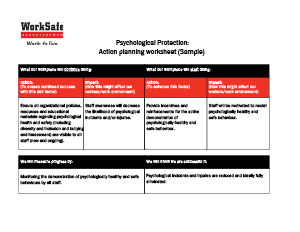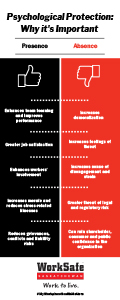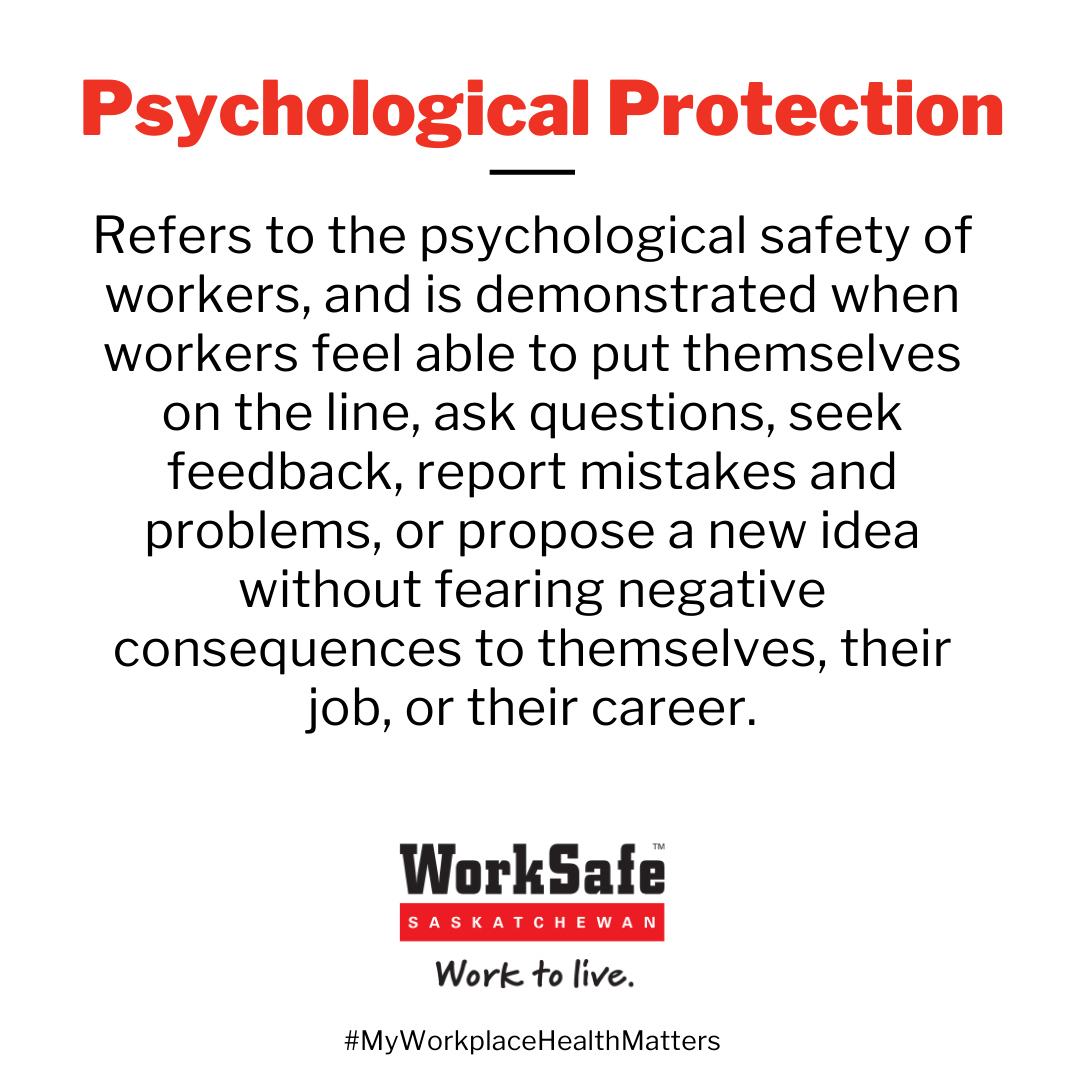 Psychological protection
Psychological protection
Refers to the psychological safety of workers and is demonstrated when workers feel able to put themselves on the line, ask questions, seek feedback, report mistakes and problems or propose a new idea without fearing negative consequences to themselves, their job or their career.
“With care and protection, with safe havens in the ocean, there is still a good chance that we can turn things around.” – Sulvia Earle
Overview
What is psychological protection?
Psychological protection is present in a work environment where workers’ psychological safety is ensured. Workplace psychological safety is demonstrated when workers feel able to put themselves on the line, ask questions, seek feedback, report mistakes and problems or propose a new idea without fearing negative consequences to themselves, their job or their career. A psychologically safe and healthy organization actively promotes emotional well-being among workers while taking all reasonable steps to minimize threats to worker mental health.
An organization with good psychological protection would be able to state that:
- The organization is committed to minimizing unnecessary stress at work.
- Immediate supervisors care about workers’ emotional well-being.
- The organization makes efforts to prevent harm to workers from harassment, bullying, discrimination, violence or stigma.
- Workers would describe the workplace as being psychologically healthy.
- The organization deals effectively with situations that can threaten or harm workers (e.g. harassment, bullying, discrimination, violence, stigma, etc).
FAQs
Action
Next steps: Ensuring employees’ psychological protection
Psychological Protection is psychosocial factor 12 from CAN/CSA-Z1003-13/BNQ 9700-803/2013 – Psychological Health and Safety in the Workplace. Retrieved from: https://www.csagroup.org/article/cancsa-z1003-13-bnq-9700-803-2013-r2018/. See also Guarding Minds at Work (Samra et al.): Retrieved from https://www.guardingmindsatwork.ca/resources.




